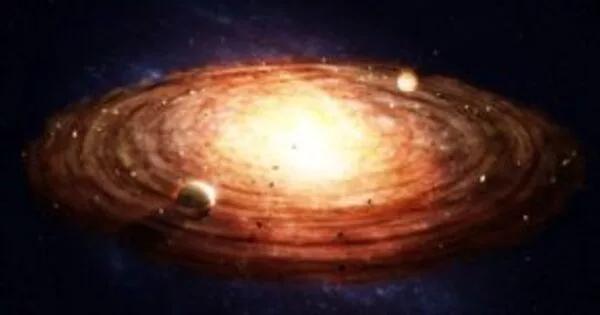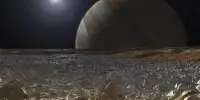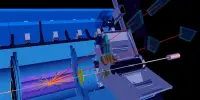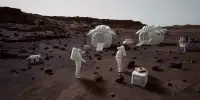The surface properties of the asteroid Psyche have been mapped by astronomers, revealing a landscape of metal and rock. NASA plans to launch a tennis court-sized probe to the asteroid belt later this year, a region between the orbits of Mars and Jupiter were remnants of the early solar system circle the sun. Once inside the asteroid belt, the spacecraft will target Psyche, a large, metal-rich asteroid thought to be the ancient core of a planet. The probe, named after its target asteroid, will then spend nearly two years orbiting and analyzing the surface of Psyche for clues about how early planetary bodies evolved.
Ahead of the mission, which is led by principal investigator Lindy Elkins-Tanton ’87, SM ’87, Ph.D. ’02, planetary scientists at MIT and elsewhere have now provided a sneak peek of what the Psyche spacecraft might see when it reaches its destination.
The team presents the most detailed maps of the asteroid’s surface properties to date, based on observations taken by a large array of ground telescopes in northern Chile, in a paper published today in the Journal of Geophysical Research: Planets. The maps show vast metal-rich regions sweeping across the asteroid’s surface, as well as a large depression with a different surface texture between the interior and its rim, which could indicate a crater filled with finer sand and rimmed with rockier materials.
Overall, the properties of Psyche’s surface were discovered to be surprisingly diverse. The new maps provide insight into the asteroid’s past. Its rocky regions could be remnants of an ancient mantle, similar in composition to the rocky outermost layer of Earth, Mars, and the asteroid Vesta, or the imprint of past impacts by space rocks. Finally, craters containing metallic material support previous research that the asteroid may have experienced early eruptions of metallic lava as its ancient core cooled.
“Psyche’s surface is very heterogeneous,” says lead author Saverio Cambioni, the Crosby Distinguished Postdoctoral Fellow in MIT’s Department of Earth, Atmospheric, and Planetary Sciences (EAPS). “It’s an evolved surface, and these maps confirm that metal-rich asteroids are fascinating, enigmatic worlds. It’s another reason to look forward to the Psyche mission going to the asteroid.”
Cambioni’s co-authors are Katherine de Kleer, assistant professor of planetary science and astronomy at Caltech, and Michael Shepard, professor of environmental, geographical, and geological sciences at Bloomsburg University.
Psyche’s surface is very heterogeneous. It’s an evolved surface, and these maps confirm that metal-rich asteroids are fascinating, enigmatic worlds. It’s another reason to look forward to the Psyche mission going to the asteroid.
Saverio Cambioni
Telescope Power
The surface of Psyche has been a focus of numerous previous mapping efforts. Researchers have observed the asteroid using various telescopes to measure light emitted from the asteroid at infrared wavelengths, which carry information about Psyche’s surface composition. However, these studies could not spatially resolve variations in composition over the surface.
Cambioni and his colleagues were able to see Psyche in greater detail, at a resolution of about 20 miles per pixel, by combining the power of the 66 radio antennas of the Atacama Large Millimeter/submillimeter Array (ALMA) in northern Chile. ALMA’s antennas each measure light emitted from an object at millimeter wavelengths, within a range sensitive to temperature and certain electrical properties of surface materials.
“The ALMA antenna signals can be combined into a synthetic signal equivalent to a telescope with a diameter of 16 kilometers (10 miles),” de Kleer says. “The larger the telescope, the higher the resolution.”
On June 19, 2019, ALMA focused its entire array on Psyche as it orbited and rotated within the asteroid belt. De Kleer collected data during this period and converted it into a map of thermal emissions across the asteroid’s surface, which the team reported in a 2021 study. Those same data were used by Shepard to produce the most recent high-resolution 3D shape model of Psyche, also published in 2021.
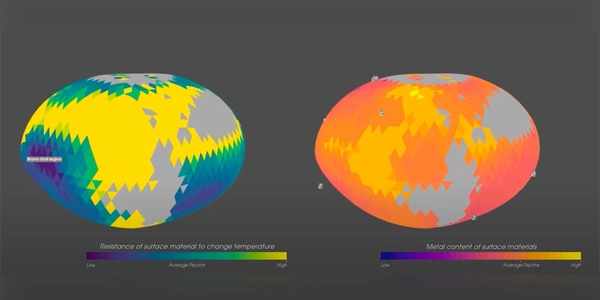
To catch a match
Cambioni ran simulations of Psyche in the new study to see which surface properties could best match and explain the measured thermal emissions. He set the asteroid’s surface with different combinations of materials, such as areas of different metal abundances, in each of hundreds of simulated scenarios. He simulated the asteroid’s rotation and measured thermal emissions from simulated materials on the asteroid. Cambioni then sought the simulated emissions that were most similar to the actual emissions measured by ALMA. He reasoned that this scenario would reveal the most likely map of the asteroid’s surface materials.
“We ran these simulations area by area to detect differences in surface properties,” says Cambioni.
The research produced detailed maps of Psyche’s surface properties, indicating that the asteroid’s surface is likely covered in a wide range of materials. The researchers confirmed that the surface of Psyche is rich in metals overall, but the abundance of metals and silicates varies across its surface. This could be another indication that the asteroid once had a silicate-rich mantle that has since vanished.
They also discovered that as the asteroid rotates, the material at the bottom of a large depression, most likely a crater, changes temperature much faster than material near the rim. This suggests that the crater bottom is covered in “ponds” of fine-grained material, like sand on Earth, which heats up quickly, whereas the crater rims are composed of rockier, slower-to-warm materials.
“Ponds of fine-grained materials have been seen on small asteroids, whose gravity is low enough for impacts to shake the surface and cause finer materials to pool,” Cambioni says. “But Psyche is a large body, so if fine-grained materials accumulated on the bottom of the depression, this is interesting and somewhat mysterious.”
“These data show that Psyche’s surface is heterogeneous, with potentially remarkable variations in composition,” says Simone Marchi, a Southwest Research Institute staff scientist and co-investigator on NASA’s Psyche mission who was not involved in the current study. “The Psyche mission’s primary goal is to study the composition of the asteroid’s surface using its gamma ray and neutron spectrometers and a color imager. As a result, the Psyche Science Team is eager to learn more about the possible presence of compositional heterogeneities.”
